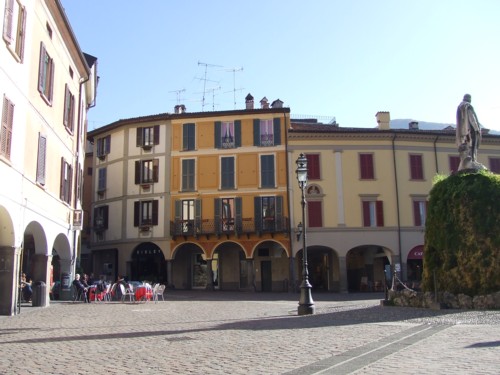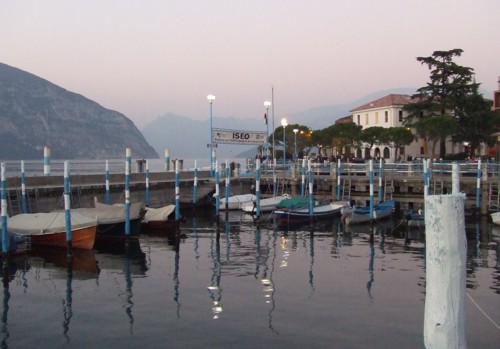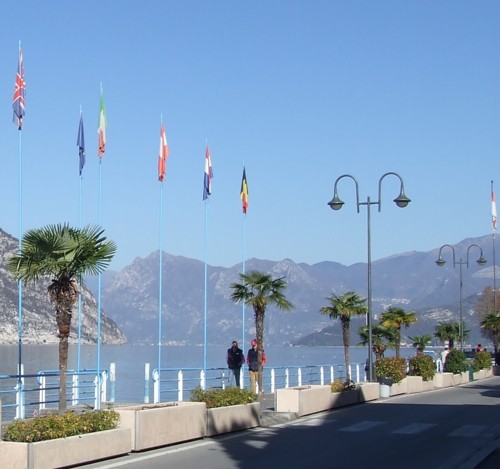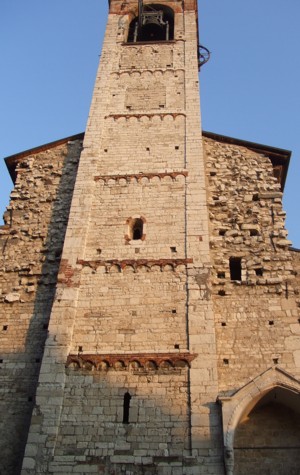About Iseo
Iseo is a small town at the southern end of Lake Iseo in northern Italy. The town, which has a population of 9,000, is in the Italian region of Lombardy (Lombardia), in the province of Brescia. Iseo is easy to reach, being just a short train or bus ride from the city of Brescia, which has a budget airport.
Iseo town is probably the liveliest place to stay on Lake Iseo. It’s larger than most of the other lake resorts and is a popular destination for daytrippers and weekenders from the nearby Italian cities, so it’s full of restaurants, bars and smart shops. Bus services connect the town with local destinations, and the ferries and railway line make it fairly straightforward to explore the rest of the lake and the island of Monte Isola. Services are reduced outside the summer holiday season, but by planning around the timetables you can still explore.
Visiting Iseo: tourist attractions, exploring and eating and drinking
Iseo tourist information office is on the waterfront (to the left if you’re arriving by ferry). They can provide maps and information about the area and local tourist attractions. If you are exploring by public transport, it’s a very good idea to pick up timetables for the ferries and trains. There is a tourist itinerary around town, with bilingual information boards by the principal sights.
The town’s heart is Piazza Garibaldi, an attractive irregularly-shaped square lined with arcades. Garibaldi himself surveys the scene from the top of a large mossy rock, as locals shop at the Friday market or bask outside sunny cafes all around. This central part of the town is pedestrianised, with a couple of similarly attractive piazzas, a good range of shops, cafes, and patisseries, and some picturesque medieval lanes. Look out for faded scraps of fresco on the facades of the town’s buildings. In one small square you can find an old public basin for laundry and washing, in use until the early twentieth century.
One of the finest buildings in Iseo is the parish church, the Pieve di Sant’Andrea. First founded in the sixth century, the present building dates to the twelfth century. The facade was never finished, although it has a Gothic tomb stuck on the outside. The church has an unusual central belltower, and contains, among other features, a painting by Francesco Hayez of St. Michael and the relics of local saint San Vigilio (St. Vigil). Just outside is another church, the Chiesa di San Silvestro, which has a lovely Romanesque apse (viewable from the outside).
Following Via Mirolte from the centre of town, you’ll reach the Castello Oldofredi, Iseo’s historic castle (it’s also signposted), once burned down by the Emperor Frederick Barbarossa. From 1585 to 1797 the castle was used as a Capuchin monastery. The exterior is square, restored and not terribly inspiring. It houses some more interesting sights, however. Take a side street (Rampa Cappucini) around to the right to gain entrance to the castle’s courtyard. Here you’ll find faded frescoes dating from the building’s time as a monastery. There is a little War Museum (Museo della Guerra) here which we recommend visiting. It’s free to visit, and contains a couple of rooms lined with uniforms, weapons, photographs and other wartime memorabilia from the First and Second World Wars. Best of all is a fantastic 3D viewer – a wooden box, with a handle to turn, featuring images of Great War soldiers on campaigns on the Carso and in the snowy Dolomites at Cadore, posing for the camera, in trenches, on guard duty high in the snow, or surveying bomb damage.

Iseo is full of places to eat and drink, from rather soul-less but scenic spots facing the lake to alluring little wine-bars and trattorie hidden down medieval lanes. Possibly because so many of Iseo’s visitors are Italian, the choice is more interesting than the usual tourist-restaurant standard. If you want a lighter or cheaper picnic meal there are quite a few bakeries and patisseries selling cakes and slices of pizza and focaccia. For really special treats, try the Pasticceria Ravara (Via Campo 7), which has a mouth-watering selection of chocolates and cakes.
Around Iseo
Of course, the most obvious thing for tourists to do is explore the lake. The island of Monte Isola, with its olive groves, woodlands, footpaths and picturesque hamlets, is worth at least a half-day – ideally more, especially if you are climbing to the chapel on its peak. Most of the lakeside towns are worth a visit and there are more sights to be seen around the northern end of the lake and up in the valley beyond.
> More general information about Lake Iseo and its surroundings
A historic route heading north along the slopes above Lake Iseo, the Via Valeriana, is being restored by the local authorities and parts are now interesting footpaths, labelled with ‘Antica Strada Valeriana’ signs and with brown and yellow paint marks. The path starts in Pilzone, the next settlement along the shore from Iseo (one stop on the train). More footpaths head into the hills around the lake; ask at the tourist office or pick up a map at a bookshop for detailed planning. Outdoors enthusiasts will also want to visit the Torbiere Sebino wetland nature reserve, just outside Iseo. This stretch of land was dug up for peat in the nineteenth century; it’s now preserved as a wildlife reserve which is home to many species of plant and bird. If you are visiting, wear sensible, waterproof footwear.

The pretty area of low hills between Iseo and Brescia is called the Franciacorta. The marshy land here was originally drained and cultivated by monasteries; it’s now famous for its wine. There’s a wine trail around the Franciacorta and opportunities for wine-tasting, and a few other sights of interest including monasteries and the attractive Castello di Bornato, a fortified castle transformed into an elegant Renaissance villa (limited opening times).
For a spot of city sightseeing, Brescia, Bergamo and Verona are all in easy reach, as is one of Italy’s more famous lakes, Lake Garda.
Travel to Lake Iseo
Iseo is easy to reach from Brescia, around 30 minutes away by train. Buses from Brescia Airport and Bergamo Airport both run to Brescia station, making for a simple journey. The railway station is a short walk from the waterfront and centre of town – follow signs to the ferry jetty – imbarcadero – from the platform. To reach the station from the waterfront, take the wide Viale Repubblica inland, and at the roundabout continue veering left along Via XX Settembre.
> Book a hotel around Lake Iseo
Useful external links
Castello di Bornato (in Italian)

